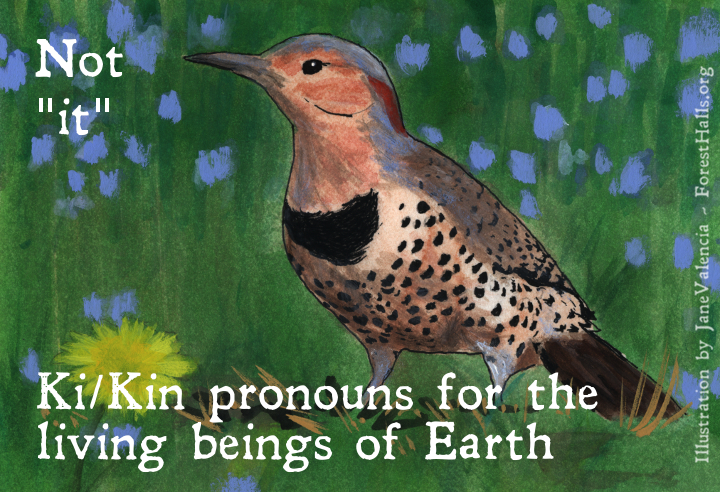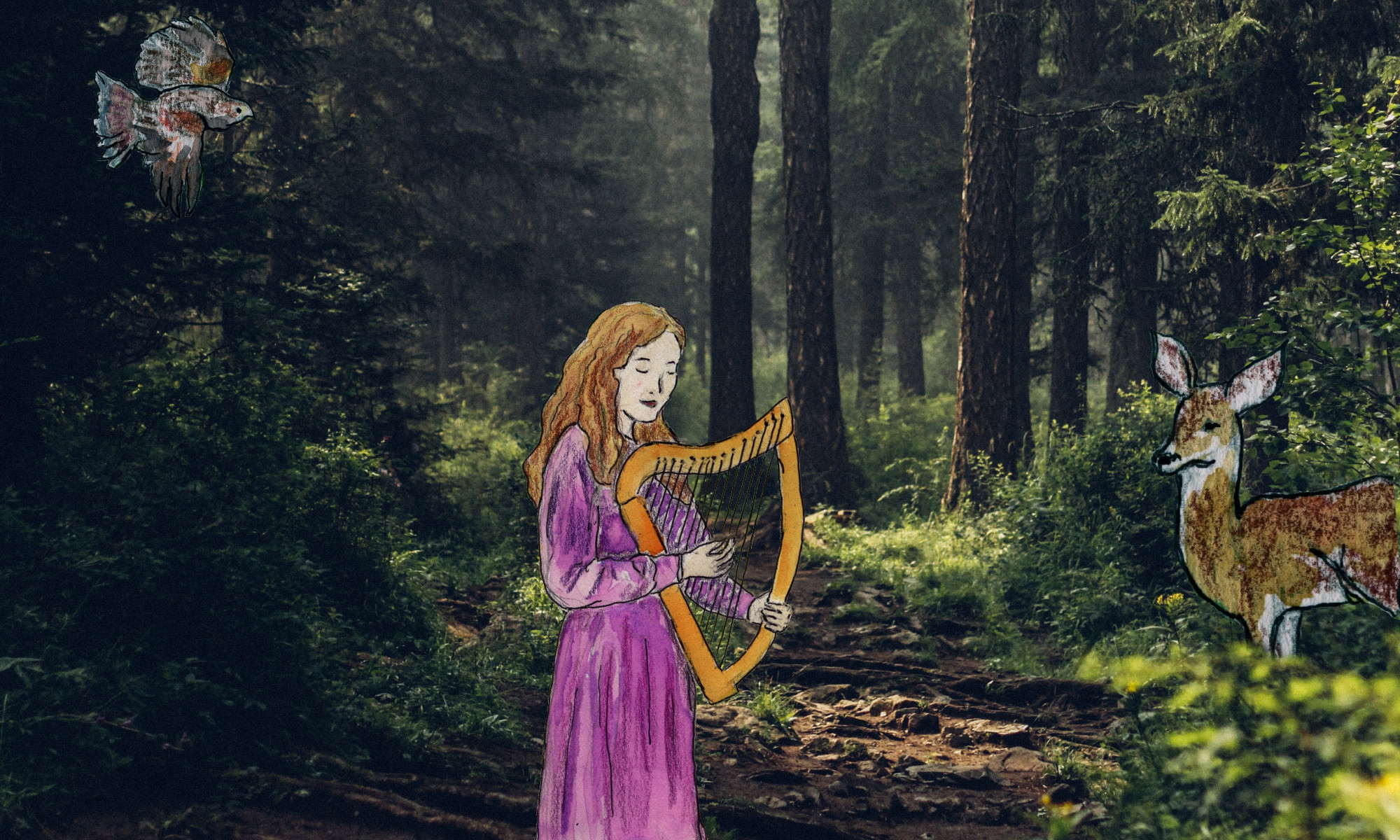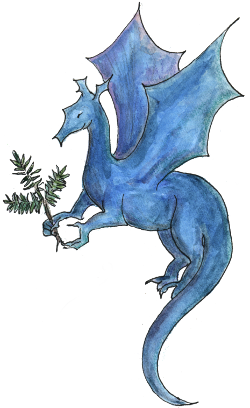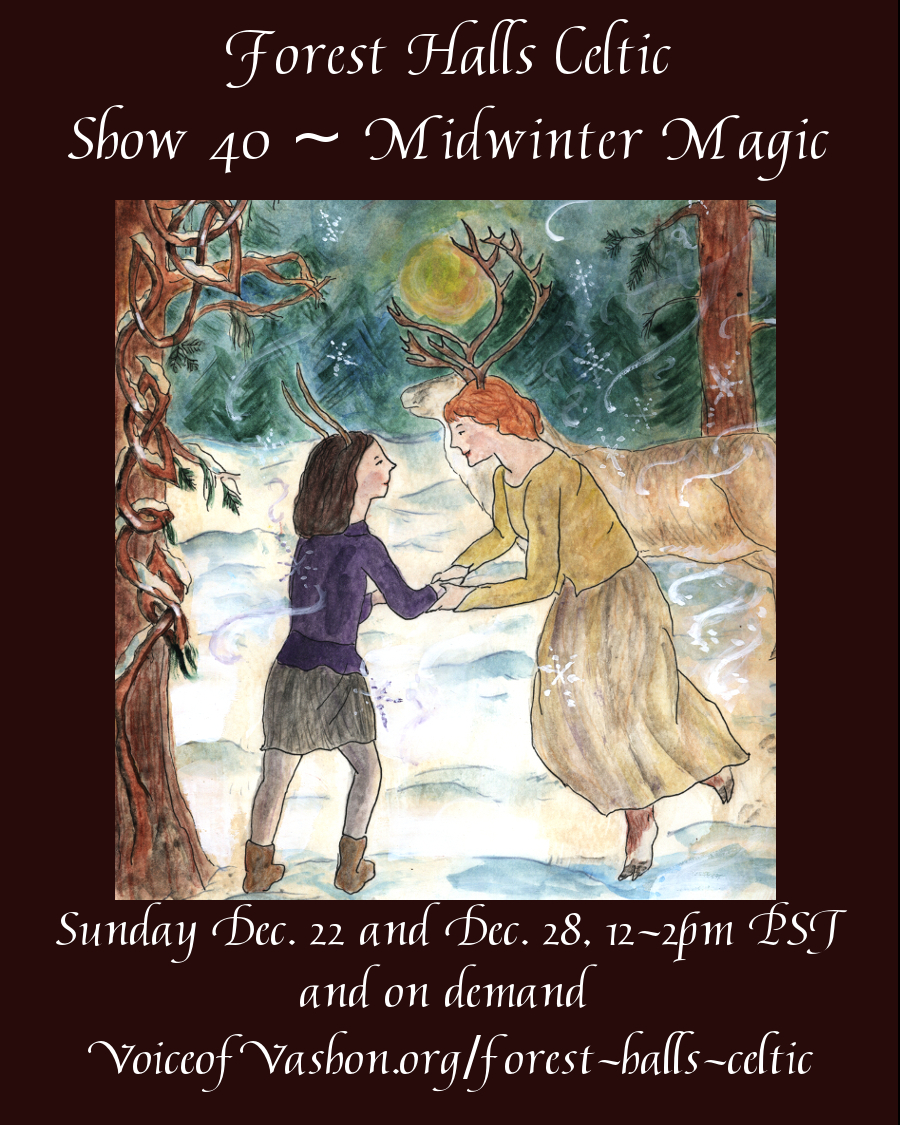In my book, Paloma and Wings: an Herbal Comic, Paloma experiences the music of the herbs! The music below is the melody that came to her when she was with Peppermint. I play it on my harp. Enjoy this short video!
Episode 40 – Radio Show – Midwinter Magic – December 22 and 29, 2019
Celebrate the season with Celtic and Celtic-inspired music, folklore, poetry, and a tale in which we help the sun take wing. We’ll enjoy a sparkling landscape of beautiful and lively tunes to honor the illuminated Dark, and to beckon the Sun to return. Pure enchantment!
Harp music is sprinkled through the show. Enjoy the song and harp of Beth Gadbaw and Margot Krimmel (respectively), and harp by Debra Knodel, Órla Fallon in Celtic Woman, Kim Robertson, and a mystery harper or two (if you can identify them, please let me know!).
The second hour of the show is the rebroadcast of Episode 19 – Midwinter Day.
You’ll be able to hear this show on demand for two weeks. Links to the artists forthcoming!
12:00: Spookytree – Lochaber No More
12:01: Margot Krimmel & Beth Leachman-Gadbaw – Icy December
12:03: Phil Cunningham and Manus Lunny – When the Snow Melts
12:09: Debra Knodel – Abbots Bromley Horn Dance
12:12: The McCallans – Highland Christmas
12:15: Altan – Soillse Na Nollag
12:21: Susan Cooper – Poem
12:22: Eimear Quinn – Winter Apples
12:26: Celtic Woman – Don Oiche Ud I Mbeithil (That Night in Bethlehem)
12:28: Kim Robertson – Gabhaim Molta Bride / Gabriel’s Message
12:36: Johnny Cunningham – King Holly, King Oak
12:40: Jane Valencia – Shell and Govan and the Little Sun
12:48: Scott Cossu – Last Snow
12:53: Alison Kraus and Natalie MacMaster – Get Me Through December
Adventuring with Ki/Kin

This post follows my first: Pronouns for the Beings of Nature – I’m using Ki/Kin
I’ve been musing about how to adapt ki and kin to possessive, objective, reflexive. As I use ki/kin and seek to expand the usage, I find myself inspired by the fact that I use a singular “they/theirs” so as to step outside of he/she (an example is “Each child will choose their book.”). I also find myself inspired by Northern Flicker’s call (“keer”), which I frequently hear these days outside my home and around our island.
As a result of both the usage and the sound, I find myself speaking like this:
Deer moved slowly across the yard. Ki turned toward me. Kir ears flicked. There ki is! Those hoofprints are kis.
Yes, I could have easily used gender pronouns for the deer. Let’s try it for Rainbow.
Rainbow spun outward from cloud and sunlight. Ki touched Earth. Kir colors brightened. There ki is! The sparkle on dew drops are kis.
Another example:
Kin dipped and soared over the yard. I called to kin. Kehr wings tipped in the sunlight. There kin are! That is kehrs.
Sometimes I find myself saying (drawing from some resonance from my study of Old English). “That is ki-held,” “that is kin-held” when working with some sense of belonging, intention, stewardship, but wanting to step away from the sense of possession/ownership in my language usage.
As I type all this blog post, my usage feels clumsy, ill-formed. But in my real-life practice with the beings I encounter, my words feel more like play, like kneeding dough, or shaping clay. Expressing through gesture and sound something that I deeply feel connecting us, then smooshing that clay and shaping again. Not having to agree with anyone yet about particulars, I allow the forms to change.

I love the idea of opening our language, dancing with words, feeling where ki becomes alive and natural and tender – a truer reflection and expression of the magic I experience and hope to share as we renew and deepen our relationships with one another in every ripple of being.
Words are a storytelling. When we shape language together, we enter a story weaving. A renewed tale for our times about who we really are within this vibrance and tapestry that is Life.
I wonder what story I may discover if I request ki/kin usage for myself.
Do you use ki/kin? What language or respect do you offer to our more-than-human family in your daily life? Do you feel like you’re trying on new shoes that haven’t shaped to you yet, or does your gesture feel natural, or some other feeling? Please share below!


